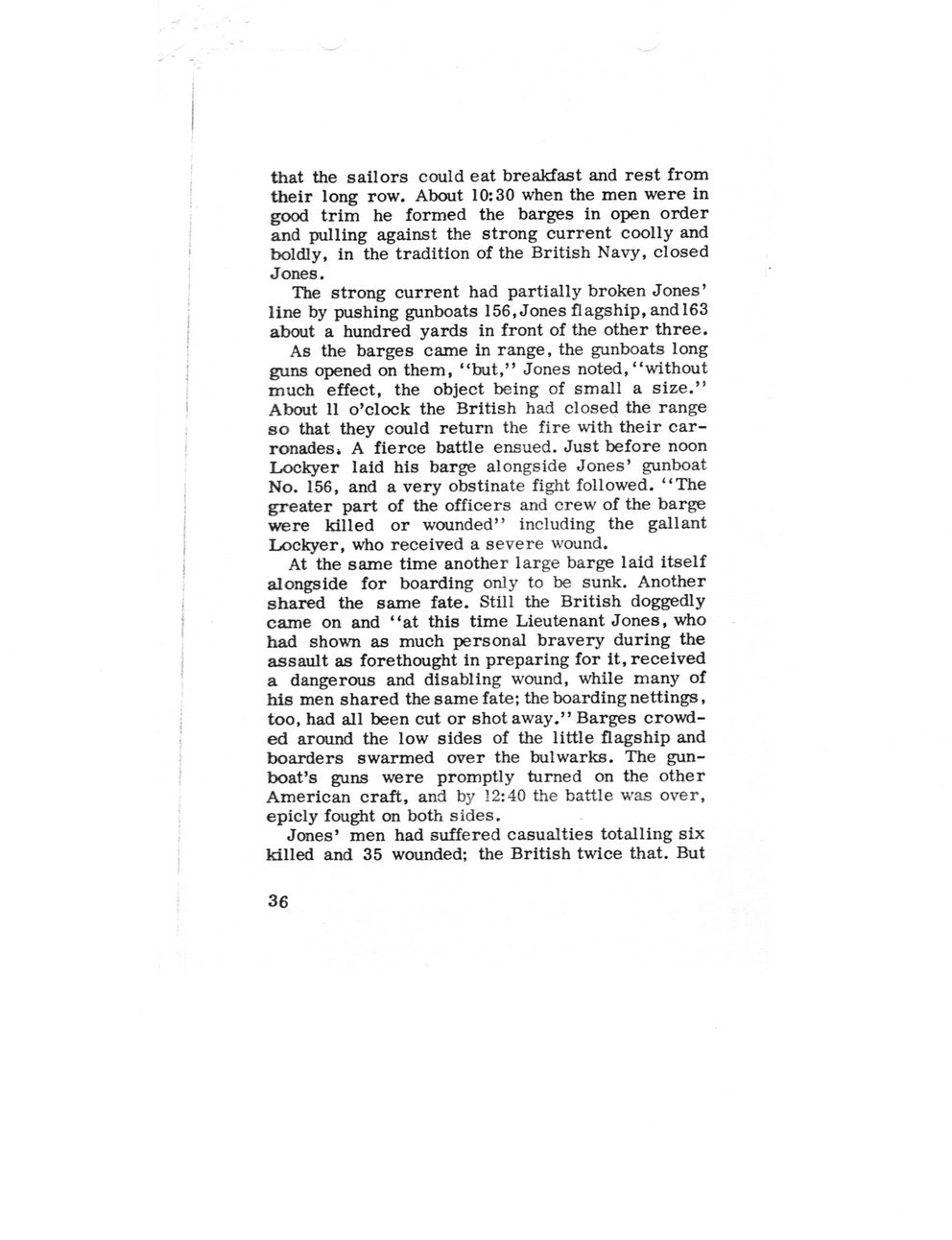This text was obtained via automated optical character recognition.
It has not been edited and may therefore contain several errors.
that the sailors could eat breakfast and rest from their long row. About 10:30 when the men were in good trim he formed the barges in open order and pulling against the strong current coolly and boldly, in the tradition of the British Navy, closed Jones. The strong current had partially broken Jones? line by pushing gunboats 156, Jones flagship, andl63 about a hundred yards in front of the other three. As the barges came in range, the gunboats long guns opened on them, ?but,? Jones noted,?without much effect, the object being of small a size.? About 11 o?clock the British had closed the range so that they could return the fire with their car-ronades* A fierce battle ensued. Just before noon Lockyer laid his barge alongside Jones? gunboat No. 156, and a very obstinate fight followed. ?The greater part of the officers and crew of the barge were killed or wounded? including the gallant Lockyer, who received a severe wound. At the same time another large barge laid itself alongside for boarding only to be sunk. Another shared the same fate. Still the British doggedly came on and ?at this time Lieutenant Jones, who had shown as much personal bravery during the assault as forethought in preparing for it, received a dangerous and disabling wound, while many of his men shared the same fate; the boarding nettings, too, had all been cut or shotaway.? Barges crowded around the low sides of the little flagship and boarders swarmed over the bulwarks. The gunboat?s guns were promptly turned on the other American craft, and by 12:40 the battle was over, epicly fought on both sides. Jones? men had suffered casualties totalling six killed and 35 wounded; the British twice that. But 36

Battle of 1814 P36